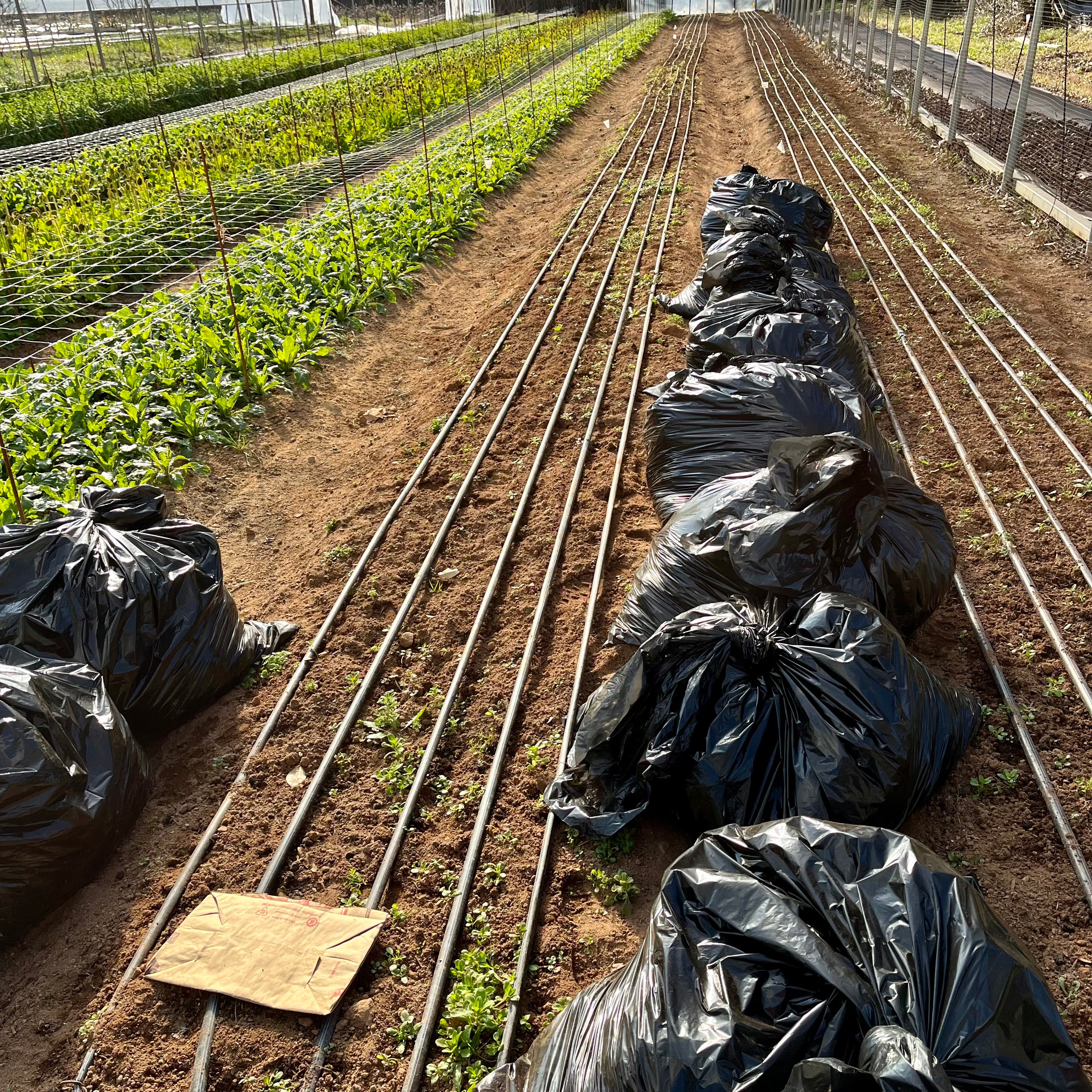
The Best Laid Plans 2/11/22
Posted on

We found a beautiful variety of snapdragons last year. So excited! Most of our snaps were anemic and underperforming last year, but this variety was gorgeous and big and healthy and saved our Mother’s Day bouquets. So, we adjusted accordingly and bought 23,180 plants, nursed them from tiny babies into legitimate plants in our prop-house, then devotedly committed hours and days of shaping beds, amending them with the best organic ingredients as per the results of our soil tests, adding compost, and fastidiously planting up a huge chunk of our biggest tunnel with them. Last year these snaps were the Biggest, Strongest, and Most Beautiful of all….they flower at the perfect time (right before Mother’s Day). They are the right choice. “Smart planning”, we says to ourselves.
From the get-go they struggled. Slow growth, yellowing leaves, poor root development. We babied them. We catered to them. We worried over them. We talked to experts, fellow farmers, and eventually sent samples to labs. Pythium rot. Not the end of the world, but not awesome. Then fungus gnats. Not the end of the world, but also not awesome.
We spend weeks dealing with both and seem to be having success. We start to get hopeful. Planning for Mother’s Day, before it’s even New Year’s. Then Mandy spots some purple on the leaves. I assume its a function of the cold. Some plants reveal a purplish hue when exposed to cold temps. I’m wrong. The color expands. The leaves flip up in an unnatural stature. We find pockets of spores on the underside of many of them. We speculate….don’t like our hunch. We Google….not what we wanted to see. We call our plant vendor…doesn’t look good. We call a plant pathology expert for UGA…doesn’t look good. We get samples back from labs….Downy Mildew. Our first time. No bueno.
The plan was to mitigate as well as we could and try and nurse them with best practices and lots of attention (read: countless hours) for the next 5 months in order to get what harvest we can to fill out our Mother’s day plans. We had our plans. Life had other plans.
The disease spread rapidly to every single one of the 23,180 plants in that tunnel. We were informed that even if we could get some of them to produce flowers, the way the disease works in the tissue, the moment we cut the flowers, they would immediately start to wilt in the vase.
Forlorn, we slowly started digging them all out of the ground. We probably left them longer than we should have. Hope and a bit of desperation causing us to hold on too long. The longer they are left in one space, the more the disease can proliferate in the soil. It’s as patient as it is deadly. It waits for up to five years for another susceptible plant to find innocent and healthy looking soil and begin to lay down roots in search of water and nutrients. The disease then invites itself up through the radical, into the root, into the shoot, and out to the leaves….where it sporulates and spreads once again through the air. Its pernicious. It has no organic enemy we can lean on. So, we pulled them out. All 23,180 of them. The good news is downy mildew is species specific, so it won’t jump over to our other plants.
A decent chunk of farming is reacting to bad/unwanted news. So much of our year and our sleep deprived nights involve changing our plans, because our plans got changed. That is, of course, life in general, but farming has a way of inflating that awareness that life is more about responding to unwanted changes as gracefully as possible than it is about perfection in planning and execution. Some things are out of your control. In farming, you are dealing with thousands of variables at all times and betting your livelihood that you can successfully navigate through it all. You can put training wheels on a situation, but you can’t eliminate every obstacle in the road. And it's a poorly maintained county road at best.
So, almost a thousand of pounds of diseased plant material stuffed into contractor bags later, we are licking our wounds and coming up with plans B-Z. We don’t have a perfect solution. Any spring flower would have needed to be planted in Fall, for it to be a helpful replacement. That eliminates plans B-S are exhausted. So, we are exploring other ideas to try and mitigate our losses elsewhere.
Ultimately, it is what it is. We move forward as best we can and look for silver linings and new opportunities to grow something beautiful and share it with our community. We’re wishing you a disease-free garden and a wonderful weekend. It’s looking like it’ll be a beautiful one.

quick links
contact us
135 Francis Hill Road
Comer, GA 30629
info@3porchfarm.com
